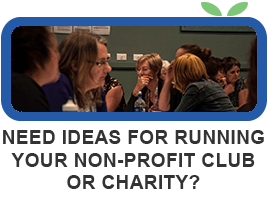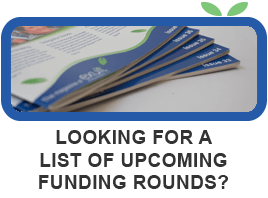Last updated June 29, 2016
With the rise (and rise!) of online social media many organisations are questioning if traditional media such as newspapers, radio, television and magazines still have a place in a non-profit marketing plan. And to be fair, when you have a limited marketing budget and countless commitments competing for your time, it’s an important question to ask.
However, like many things in life, there is no definitive answer to the ‘traditional media’ question. In a general sense; yes – these types of media are still valid marketing channels, but it all depends on how you use them and what exactly you’re trying to achieve. Effective marketing for non-profits is less about the channels you use and more about how you use them.
Don’t be sucked in to spending hundreds of dollars on one-time display advertisements that will have limited (if any) impact. Instead, use traditional media to tell stories about what’s happening in your organisation. Here are our top tips for getting your stories told:
1. Build a relationship with media representatives
Reporters and media representatives get press releases sent to them every single day, so you need to find a way to cut through the clutter and get noticed. One of the best ways to do this is to develop a relationship with your local reporter, or a representative in your particular field.
Start by making an appointment to meet with them, give them some background to your organisation and share some stories about the impact your organisation is having in the community. Explain that you want to be able to share these stories with the wider community on a regular basis and ask their advice on the best way to do this. They will tell you exactly what they need from you in order to make it happen.
Make sure you follow up the initial meeting with a genuine thank you, and invite them to visit your centre or sit in on one of your programmes. Keep in regular contact with that person, and make sure you say thanks every time they publish or air something on your behalf.
2. Make sure your stories are newsworthy
For many organisations, the only time they send a press release is when they are holding an event of some kind. While large scale community events usually merit a mention, most fundraising activities are not really newsworthy. Charitable – yes. Community Spirited – perhaps. Interesting – probably only to you.
If you want to get your stories told, you need to find the newsworthy angle in everything you send. One way to do this is to relate your story to a current hot topic. What does back to school time mean for the families you support? How does the summer weather affect the people you serve? What makes the New Year particularly difficult for the people in your care? News media want stories that relate to current issues, so be aware of what is happening in the wider community and how it relates to you.
If the media you are working with focuses less on ‘news’ and more on ‘stories’, make sure your stories relate to their audience. One story can be told in many different ways, so make sure the angle fits the media you are sending it to.
3. Grab their attention in the subject line
When emailing your press release to media, you want to make sure that the email actually gets opened. Grab their attention by using the right words in the subject line.
If it is local media you are sending it to, make sure you state it is a press release and have the word ‘local’ or the name of your town or city somewhere in the subject line. If the media is more nationally based, create a headline that shows the story is both newsworthy and relevant. Avoid creating ‘catchy’ headlines that make it difficult for the reporter to recognise what the story is about.
So the story can be easily skim-read include the information in the body of the email, as well as in an attached document. Make sure the document name matches the subject line.
4. Establish yourself as the expert
In whatever area you are working in, your organisation has expertise in that field. It might be youth, people with disabilities, animal welfare, early intervention or any number of other things. Recognise that you are experts in that field and make a habit of contacting reporters to comment on related stories.
Over time, you will establish yourself as an expert in that field and reporters will come to you for comment or more information. When you send in your own stories, you will already be known to them and you have more chance of getting a response.
5. Learn to write well
You only get one shot at telling your story, so make sure that your press releases are put together well. If you’re not confident in the writing stakes, it is worth doing a workshop to improve your writing skills – specifically as it relates to the media. You can also contract people to write press releases on your behalf.
As a general guide, make sure your story covers the most interesting or relevant points right at the start. Cover the basics such as who, what, where, when, why and how, and make sure you include some quotes from relevant people to give the story a human touch.
Avoid rambling just to make the story longer. By all means include as much as you need to, but make sure the point of the story isn’t lost with too much waffle. In most cases a press release should be no more than 300 words. Always include contact details for someone who can be reached for more information if required.
6. Look for photograph or video opportunities
They say a picture tells a thousand words and when it comes to the media, it is often the photograph or accompanying video that will get you the story. Be creative in staging your photographs and avoid cliché images like handing over a big cheque!
Make sure the photographs or videos you send are high resolution and in an easily recognisable format. They are only useful to the media if they can actually be used.
7. Respond to interview requests
If you get the opportunity to be interviewed on radio or television – do it. It can feel really scary the first time around, but if you are well prepared, it is a good opportunity to raise the profile of your organisation and get some key messages out into the community. Confidence is key and the more you do it, the better you will get.
If you think this article would be useful for your members, you are welcome to use it on your website or in your newsletter. We just ask that you let us know where it is being used, and that you acknowledge our website at the bottom of the article. If you are using the article online, please include a link to our homepage.




